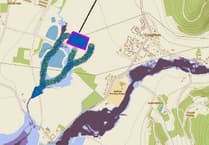More than a third of patients seeking the most serious A&E care at the Wye Valley NHS Trust waited longer than four hours to be seen last month, figures show.
The Nuffield Trust health think tank said delays to care are “uncomfortable at best and dangerous at worst” and cautioned that the coronavirus pandemic is not solely to blame for current pressures on A&E services across the country.
NHS guidance states that 95 per cent of patients attending accident and emergency departments should be admitted, transferred or discharged within four hours.
But Wye Valley NHS Trust fell well behind that target in May, when just 63 per cent of the 6,023 attendances at type 1 A&E departments were seen within four hours, according to figures from NHS Digital.
Type 1 departments are those which provide major emergency services – with full resuscitation equipment and 24-hour consultant-led care – and account for the majority of attendances nationally.
It means 37 per cent of patients seeking the most urgent care at the Wye Valley Trust waited too long to be seen last month, compared to 40 per cent in April, and 27 per cent in May 2021.
The King’s Fund think tank warned patients are waiting longer in A&E departments for a “wide range” of reasons, including rising A&E attendances and emergency admissions to hospital, fewer hospital beds being available and staffing strains.
“The four-hour A&E waiting time standard is one of the most high-profile indicators of how the NHS is performing,” it said in a recent report.
“The sustained declines in performance against this waiting time standard place a significant toll on patients and staff alike and are a clear indication of the pressures the wider health and care system is under.”
The 95 per cent standard has not been met across the NHS in England since July 2015 – and last month, just 73 per cent of A&E attendances were admitted transferred or discharged within four hours, compared to 84 per cent in May 2021 and 87 per cent in May 2019.
Performance was worse in type 1 departments, where just 60 per cent of patients were seen on time in May, down significantly from 76 per cent during the same month last year, and 79 per cent before the coronavirus pandemic.
Nuffield Trust fellow Jessica Morris said: “Performance against the four-hour target has deteriorated rapidly during the pandemic but looking back further it is clear that waiting times for patients in major emergency departments have been growing for the last decade.
“A decade ago, one in 20 people found themselves waiting longer than four hours to be either admitted, transferred, or discharged from major A&E but the most recent figures show this has jumped to four in 10 people. These waits are uncomfortable for patients at best and dangerous at worst.”
At Wye Valley NHS Trust in May, there were 143 booked appointments, up from 139 in April.
480 patients waited longer than four hours for treatment following a decision to admit – 8 per cent of patients. Of those, 249 were delayed by more than 12 hours.
Separate NHS Digital data reveals that in March the median time to treatment was 60 minutes. The median average is used to ensure figures are not skewed by particularly long or short waiting times
Around five per cent of patients left before being treated.





Comments
This article has no comments yet. Be the first to leave a comment.